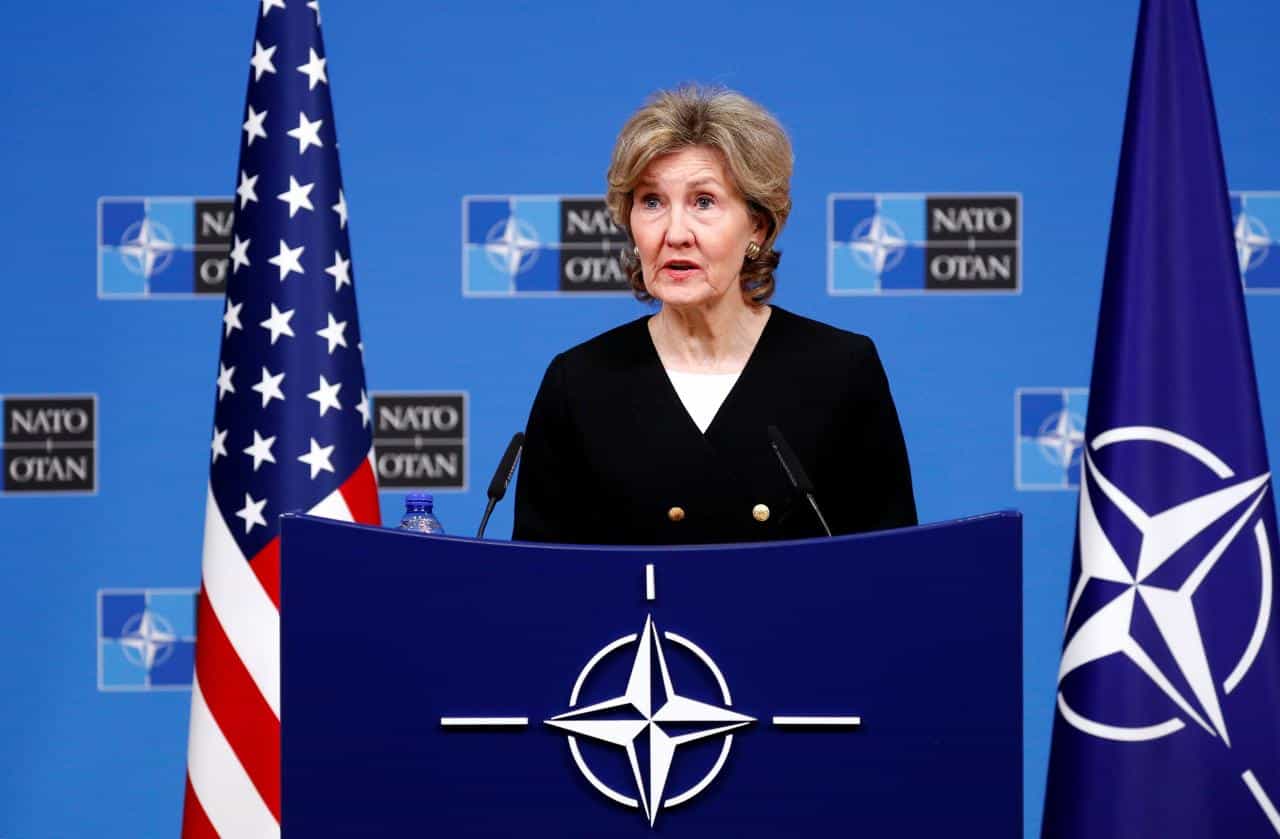Earlier today the US ambassador to NATO threatened to “take out” a new kind of Russian missile:
The US envoy to NATO on Tuesday said that Russia must halt development of new missiles that could carry nuclear warheads and warned that the United States could ‘take out’ the system if it becomes operational.
The US and Russia have for some time disagreed about the INF treaty. The Intermediate-Range Nuclear Forces Treaty was signed in 1987 between the Soviet General Secretary Gorbachev and US President Reagan. It prohibits land based (not sea based) nuclear capable systems with a range of more than 500 kilometers and less than 5,500 kilometers. The agreement came to pass after the Soviets stationed SS-20 missiles in East Europe. NATO responded with the Pershing II deployment. The problem with these missiles was warning time. Fired at a relative short range they threatened to overwhelm one side before it could respond. The missiles thus destroyed the equilibrium of Mutual Assured Destruction (MAD). The INF treaty banned these missiles.
Russia said for years that the US broke the INF agreement when it stationed missile defense systems in Europe to allegedly take out North Korean and Iranian intercontinental missiles. The missile defense missiles could possibly be armed with nuclear warheads and could probably be used in a surface-to-surface mode. (Previously deployed US Nike-Hercules air defense missiles had such capabilities.)
The US denies that its missile defense systems break the INF and accuses Russia of breaking the treaty by testing a land launched version of its sea launched Kalibr cruse missiles. Russia denies that it is testing anything that is not compatible with the INF treaty. If there is a land launched version it is likely confined to a range below 500 kilometers and thus in compliance with the INF. The sea launched version has a reach of up to 2,500 kilometer. An export variant is limited to 300 kilometer. The possibly land launched version, which is said to be shorter than the original Kalibr missile (see comments), might well have a much shorter range than the sea launched system. The missiles have, as far as is publicly know, non-nuclear warheads.
The US ambassador to NATO is Kay Bailey Hutchison, a long-term Republican politician with no military experience. Her choice of words in today’s press briefing was clearly unprofessional:
Question: […] Ma’am, can you be more specific what kind of new information that you are bringing to the table regarding the breach of the INF Treaty? And more explicitly also, what kind of countermeasures that you are considering.
Ambassador Hutchison: The countermeasures would be to take out the missiles that are in development by Russia in violation of the treaty. So that would be the countermeasure eventually. We are trying not to do anything that would violate the treaty on our side, which allows research, but not going forward into development, and we are carefully keeping the INF Treaty requirements on our side, while Russia is violating. …
The reporters in the room were in disbelieve over such aggressive wording and followed up:
Question: Thanks, Ambassador. Lorne [Inaudible], Associated Press. Just to clarify a little bit when you said to take out the missiles that are in development, we are a little excited here. Do you mean to get those withdrawn? You don’t mean to actually take them out in a more [inaudible]?
Ambassador Hutchison: Well, withdrawing, yes. Getting them to withdraw would be our choice, of course. But I think the question was what would you do if this continues to a point where we know that they are capable of delivering. And at that point we would then be looking at a capability to take out a missile that could hit any of our countries in Europe and hit America in Alaska. So it is in all of our interests, and Canada as well, I suppose. So we have our North Atlantic risk as well as the European risk.
So what is the ambassador going to do? Bomb Russia over a disagreement about the technical specification of a potential new missile that is not even deployed yet?
This nonsense comes just days after the US Interior Secretary Ryan Zinke suggested that the US Navy might blockade Russia because of its energy trade.
When the INF treaty was signed NATO was far from Russia’s border. Now it is directly at it. The Russian government takes such threats seriously. Its spokesperson was not amused (Ru, machine translation):
The North Atlantic Alliance does not realize the degree of its responsibility and the dangers of aggressive rhetoric, Russian Foreign Ministry spokeswoman Maria Zakharova said Tuesday when commenting on the words of US Permanent Representative to NATO Kay Bailey Hutchison about the possibility of shooting down Russian missiles.
…
“It seems that people making such statements do not realize the degree of their responsibility and the dangers of aggressive rhetoric. Who authorized this woman to make such statements? The American people? Are the people in the US aware of the fact that so-called diplomats are paid aggressively and destructive? It is very easy to break and destroy everything. It is difficult to repair and repair. American diplomacy has a lot to do to recover from the consequences of its inherent errors, “Zakharova told reporters.
One hopes that the ambassador erred in her “take out” response. Otherwise Russia will probably consider to “take out” the ABM assets the US deploys over Europe. That would surely produce a lot of content for the Express’ “World War 3” category.
Reprinted with permission from Moon of Alabama.


